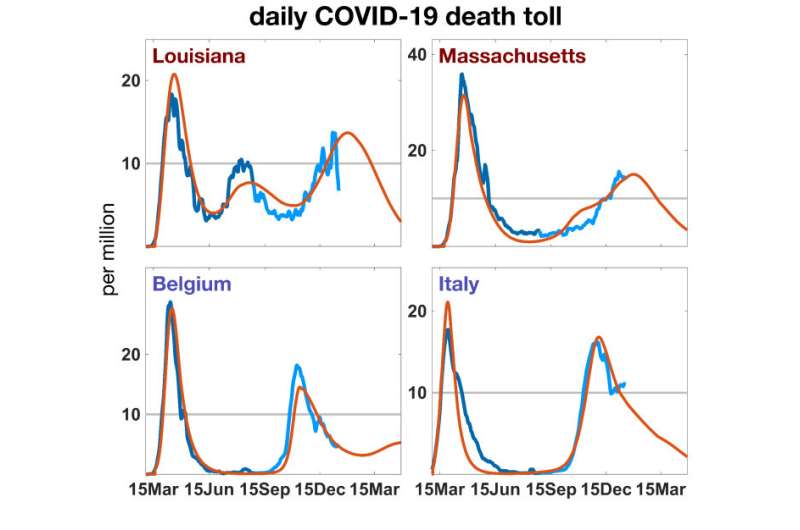Home » Health News »
Modeling how the a pandemic makes us tired

Societies act rationally and in solidarity—but also increasingly experience a sense of fatigue, says a study by Helmholtz-Zentrum Hereon
How a pandemic progresses in a country is largely determined by social, political and psychological processes. Predicting these socio-dynamics seems hardly possible until today; thus making it impossible to foresee the course the pandemic takes. This is where a new simulation study carried out by the Helmholtz-Zentrum Hereon comes into play, which is now published in the journal Scientific Reports. Every pandemic affects life and actions of people, which in turn controls the course of the pandemic.
Until now the factors that determine our social, political and psychological sphere could not be described by mathematical models, making it difficult to venture forecasts for the Corona pandemic. The new study will improve the situation. Researcher Prof. Kai Wirtz of the Hereon Institution for Coastal Systems—Analysis and Modeling quantitatively describes the social phenomena hinted at above. “As a scientist, social modeling has been driving me for a while. It has also reached coastal research in the meantime. The greatest challenge in this development was the integration of human agency into conventional epidemiological models,” says Wirtz.
How Corona changes people
Due to the problems in predictability of social dynamics, Wirtz uses the uniqueness of the global Corona pandemic for the new study. This comes along with an unprecedented data availability, as he emphasizes. The study uses a part of these data sets—primarily presented by Apple, John Hopkins CSSE und YouGov—to quantitatively test a novel model on the basis of the different pandemic course patterns in 20 affected regions. The regions include 11 EU countries such as Germany, Italy and Sweden, Iran, and eight states in the US.
Societies that were affected by the pandemic at the beginning of 2020, mostly Western industrialized countries, succeeded in curtailing the rates of infection through measures such as social distancing. After the societies began to lift the imposed lockdowns in May 2020, some of them achieved very low case figures while others were affected by an enduring high rate of mortality. Later during the fall and winter seasons of 2020/2021, all these regions were hit by a massive second and third wave despite their experiences made during the first lockdown.
The model of the study combines classic equations for viral spreading with simple rules for social dynamics: as a basis it is assumed that societies act rationally to keep the cumulative damage, resulting from COVID 19-caused mortality and the direct socio-economic cost of social distancing, as low as possible. “However, the simulation results show that another mechanism is crucial to describe the dynamics in the 20 regions: the erosion of so-called “social cohesion” with a reduced willingness for and efficacy of social distancing,” says Wirtz.
Lost cohesion
It is only the simulation of this erosion process that results in curves of regional mortality rates and mobility and behavioral changes which are almost exactly identical to the empirical data. Thus, the study presents the first model which increases the period of forecasting from so far few weeks up to one year. In addition, the model can potentially be used to describe the impact of new SARS-CoV-2 mutants.
Source: Read Full Article



